The weeks go by… and they look alike. Last week I spent a day in the Art Deco atmosphere of the Bœuf sur le toit. This week it’s a day in a law firm where magnificent marble and gilding (probably from the 19th century, Lahouari whispers to me) give momentum to all the workshops but prevent me from hanging anything on the walls…
Objective for the day: build team spirit, team building and ideally leave with something for the following Monday. About twenty people, mainly in the field of bizdev, finance and legal. They explain to me that there can be animosities, tensions, and first and foremost that we need to open up a space for dialogue and make visible all the underlying non-verbal acts and vandalisms to mitigate them. I then suggest having Boris accompany me in order to have a double voice: one oriented towards organization, facilitation, management, and which will lead the common thread of the day, me, and the other oriented towards individual and team dynamics who will operate more like a voice-over for the group or for individuals, Boris therefore, whom I’ve known for a long time and with whom I do assignments and conferences. Boris whom we regularly bring in at beNext. If the same person mixes these two voices they lose intelligibility.
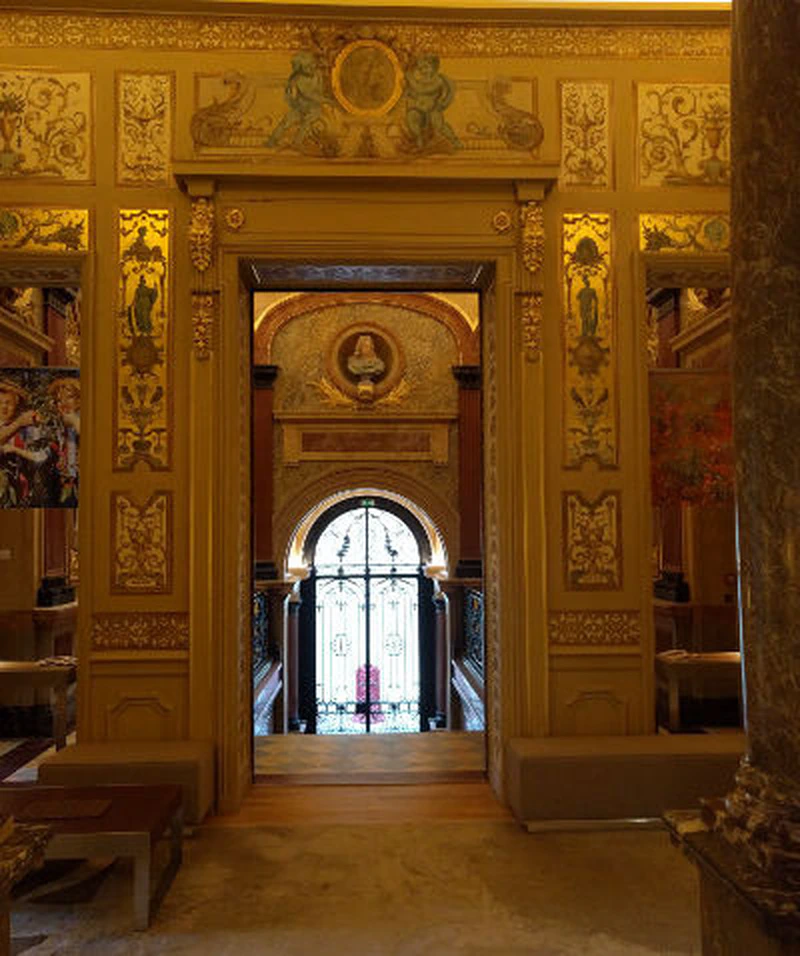
Go ahead and put a post-it on these walls…
Anyway. My strategy is to start from reconciliation to move towards action. A first step around a secure retrospective (without mixing groups), then a Give and take workshop transformed into a “needs” workshop, then I imagined a kanban to make the complete process of a project visible to everyone but Dragos cleverly advised me to switch entirely to an event storming (which Alberto had demonstrated to me at ALE 2015 and I’ve been using here and there since). Finally a practice sawmill to give depth and action to the event-storming. I’ll come back to all this below.
Retrospective and skits
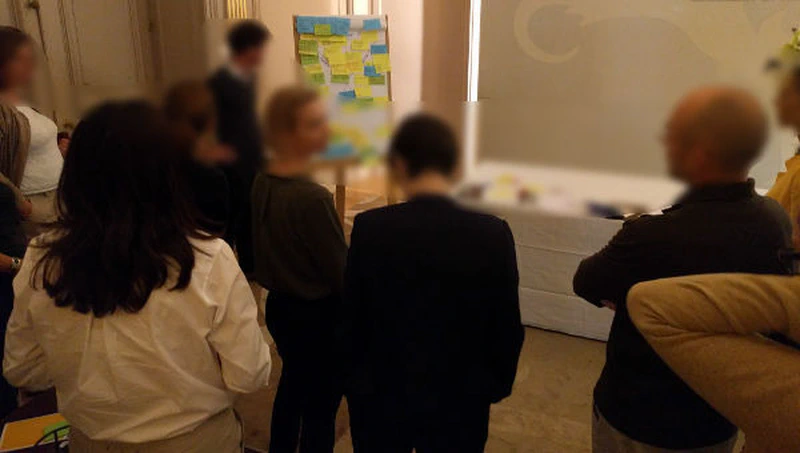
First give a space for speech, sharing, understanding to ease the tensions that I’m told are flourishing in the team. Make each group understand the other’s vision. Good move for Boris who simultaneously highlights a triptych emotion, action, thought which is well distributed among the three subgroups (finance, bizdev, legal) and which also explains certain misunderstandings (we say the same thing but no one understands the other, or doesn’t listen with the right channel). We start with a starfish retrospective (more of, less of, continue to, stop, start) quite classic. The point being for each group to present their reflections and the key point or two that emerge to the other groups. State out loud, purge, clarify.
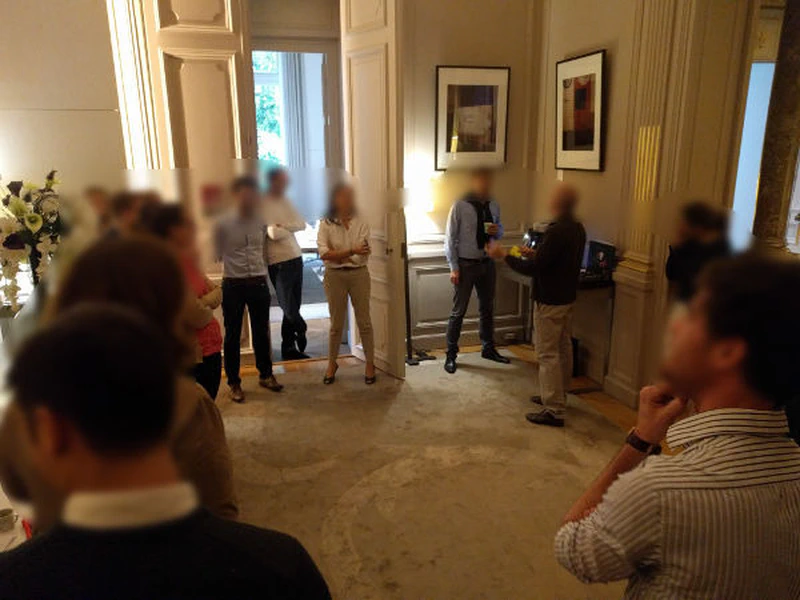
Then to go further I ask each group to perform skits around these key elements that came out. As always no one is obliged to act, we can act with notes, we can prompt. For me there are two important elements. First point: the preparation, the conversation about the scenes to be played. These are physical moments, very tangible, to imagine or transcribe. We touch on a reality (even if we often exaggerate it). Second point: the personification. We take on the skin of, or we see someone who personifies us. Again caricature, so much the better, it de-dramatizes, it gives good humor. But suddenly it’s no longer discourse but feeling, tangible.
Give and take = needs

The Give and take workshop is the idea of a matrix that allows each group to discuss what it takes (take) and what it gives (give) to others. In my framework I simplify it to “what do you expect from the other group” (needs) in the context we’re setting ourselves (here the pursuit of bizdev projects). We don’t judge, we don’t attack, we might disagree, and that’s okay, we’re just clarifying everyone’s expectations, where each projected the other. Boris takes the opportunity to add a layer of nonviolent communication in expressing expectations. The workshop fulfills its objective, we discover gaps, tensions, shortcomings. Now we know them.
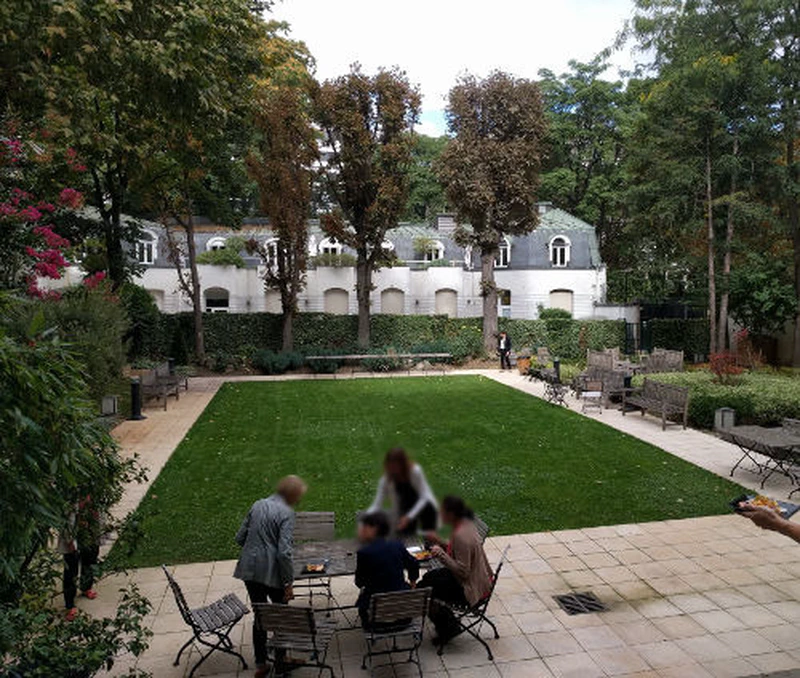
It’s break time, and a small interior garden, a stone’s throw from the Champs-Elysées, reveals itself. In the greenery I call my muse. I observe the group. The meal, that decisive moment. We laugh. Someone asks us if we were in the latest “Capital”. We laugh even more. Forbidden to tease me about that!
Event Storming
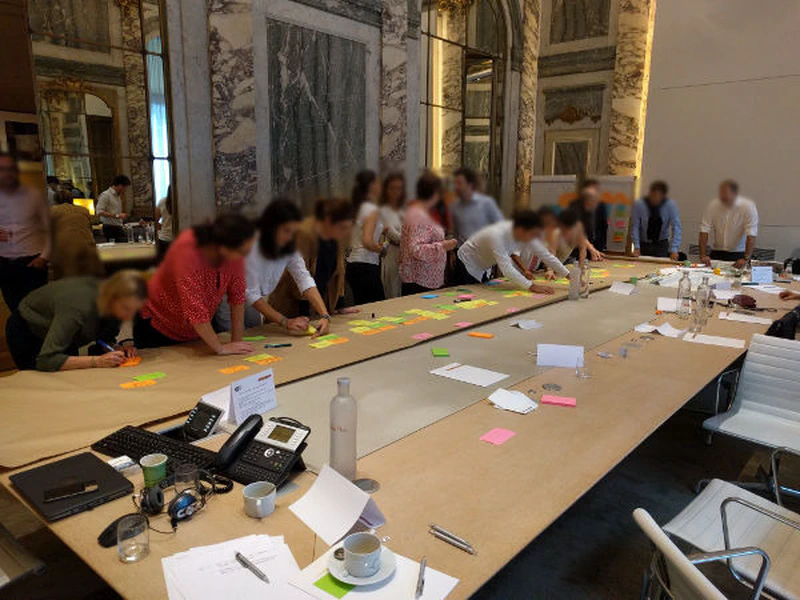
After an introspection and personification (the retrospective and skits), then a clarification of expectations of each person’s scope (give and take) we tackle a big piece: an event storming of the project process. We clarify again, as a group, mixed this time, all the stages of a project, the actors attached to each stage, external dependencies, triggers, key data. This perfectly complements the expectations matrix, gives depth over time, aligns everyone on a common, shared process. We’re already starting in discussions to add elements that we consider missing.
It’s physical work, where everyone works on the same material. The reading is therefore shared. The depth is given by a timeline and the densities, bottlenecks, substance of the post-its. The physical elements also limit to the essential. The color densities reveal deviations (too much yellow, too many participants, probably too many silos…).
Event Storming is a very clarifying element for a group. The photo at the top left shows this well.
Practice sawmill: depth and action
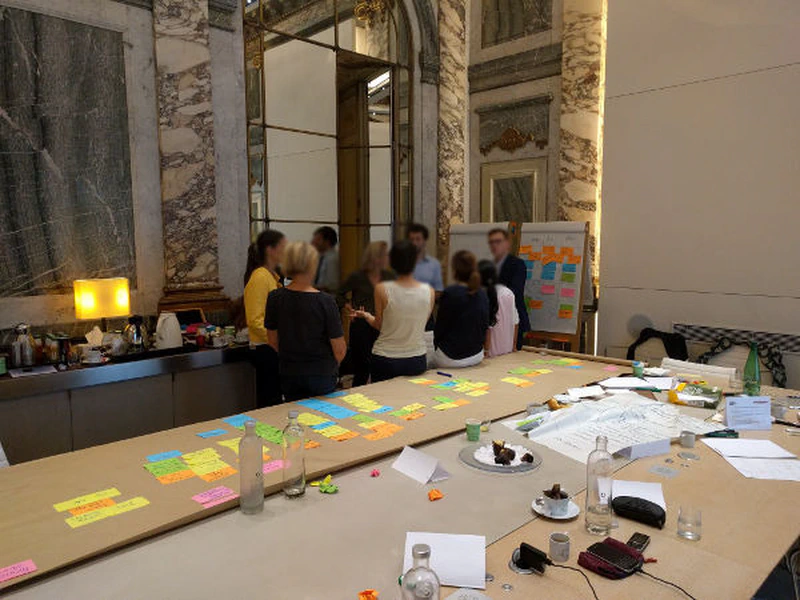
When everyone agrees that the work is thus well represented (by the event storming) then through a final workshop (a sort of practice sawmill) I try to give depth (meaning and prioritization) and a first action (to change we must go there step by step, by cycle, in a protected space).
We therefore ask everyone to designate in the event storming the moment that seems to them the most essential, the most strategic. And why in their eyes it’s that moment. The why, the meaning. Then we discover that this represents roughly three groups, on three key phases: structuring, arbitration, and closing the deal. For each group I ask to reflect a bit and assign themselves a score out of ten regarding this moment they consider so important in this timeline representing their domain. We get, for example, 4/10, 4/10 and 8/10. I then ask each group to brainstorm and explain to me what they will do in the coming month to increase this score by one or two points. To succeed in a change, it’s about not seeing too big. Having something concrete, actionable. Note: the groups are now heterogeneous compared to the initial groups for the brainstorming.
I also asked which passage of the event storming seemed useless or anecdotal to them. There weren’t any, but otherwise we could have tried to stop doing this activity the following month, to try (change is facilitated if we can go back, so we simply try).
There you have it, it seemed to me that it was a good journey, that made sense. From an analytical, introspective phase, which could purge things, to a clarifying phase (matrix and event storming), which triggered work from heterogeneous groups, to open onto a phase with concrete actions, simple, realistic, actionable from the following Monday. Once again, if you try the same flow don’t hesitate to share your feedback with me.
Since we’re talking finance right now too: the Agile DAF/CFO with agilecfo.